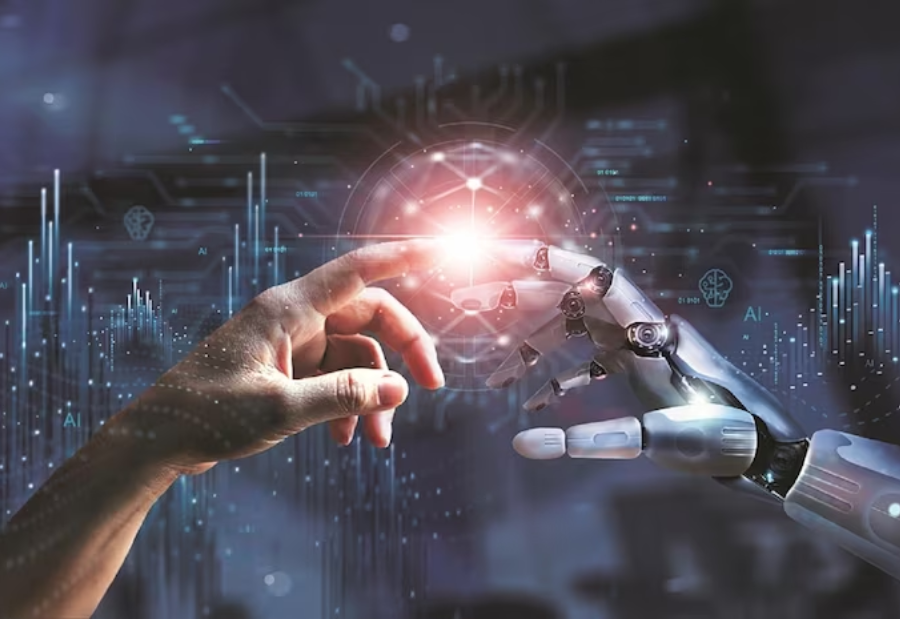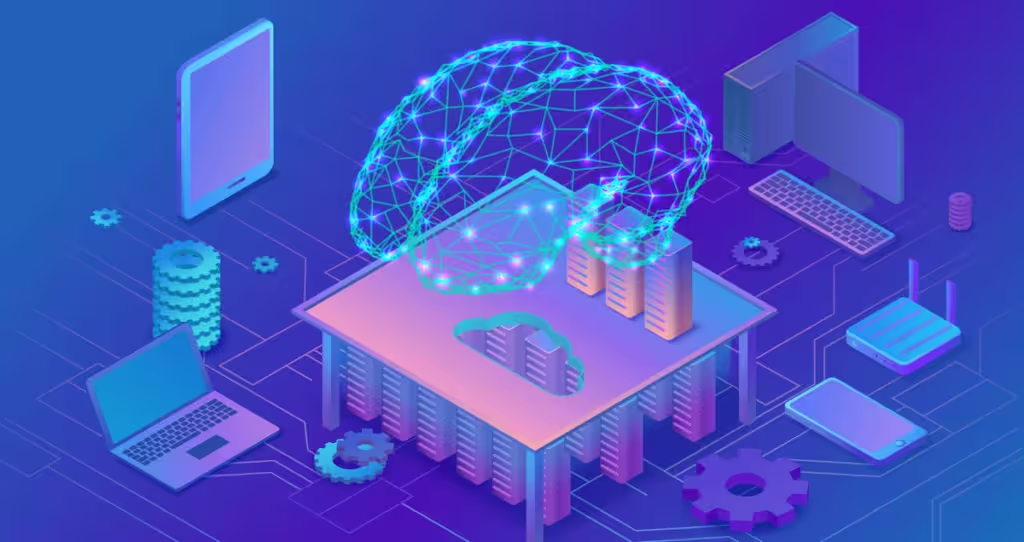Even though the incorporation of artificial intelligence (AI) in customer service has brought significant transformations, it is the Human-AI Collaboration that is actually changing this sector. The collaboration between humans and machines enables organizations to deliver customized services at a faster pace by combining the strengths of both: AI is fast and accurate, while human agents are empathetic problem solvers.
In delivering high-quality support services to customers, businesses must leverage the strengths of Human-AI Interaction in Customer Service. This means that any repetitive inquiries can be handled by AI, allowing humans to manage complex scenarios and thus deliver a great user experience. Through this approach, not only are response times improved, but the effectiveness of support teams is also increased, making Human-AI Synergy in Customer Support vital in contemporary customer care solutions.
What is Human-AI Collaboration?

Human-AI Collaboration is an important innovation in customer support systems. In this partnership, both systems contribute to the provision of services and can handle tasks effectively. AI and Human Interaction for Enhanced Customer Support can manage most customer queries, leaving the more challenging ones for humans, who are better suited to use their problem-solving skills in such cases.
A combination of human empathy and machine precision ensures that customers receive quick responses with a personal touch that mechanical systems cannot offer. Organizations that are using AI-Human Collaboration in Customer Support Solutions are building better relationships with their clients, thereby increasing loyalty and satisfaction.
The Rise of AI in Customer Support

Human-AI Collaboration in Customer Support enables companies to interact with clients effectively. For instance, AI tools like chatbots and virtual assistants can handle a large volume of interactions each day. This offers businesses several benefits, including 24-hour availability and enhanced customer satisfaction, as customers will always have access to support when needed.
A distinctive feature of Human-AI Interaction is its ability to process vast amounts of data rapidly and provide instant responses to general inquiries. For example, an AI chatbot can quickly provide information about a product’s price, availability, or features, significantly reducing the need for manual entry and speeding up response times.
On the other hand, combining AI with human expertise allows business owners to develop more effective customer service systems. Human-AI Interaction in Customer Service improves support systems by allowing AI to handle initial inquiries and gather relevant information before passing it to a human agent. This approach saves time and ensures that customer issues are addressed effectively.
There are numerous Human-AI Interaction examples in Customer Service that demonstrate how human agents working alongside AI can enhance customer support. Human agents handle complex questions, while automated systems manage simpler tasks, such as password resets, where human expertise is not required.
AI also helps companies understand common customer issues by analyzing customer data. This information can be used to improve product development, service enhancement, and support mechanisms. For example, if AI detects a high volume of complaints about a product, it can alert employees to provide additional assistance or advice to customers.
Additionally, AI can assist human agents by offering real-time responses, suggesting relevant information, or providing answers to customer inquiries. For example, it might suggest links to FAQs or articles that address the customer’s question quickly. Using more familiar terms for FAQs could enhance readability and user understanding.
When AI handles administrative tasks such as booking appointments, sending follow-up emails, or generating invoices, human agents can focus on more strategic work rather than routine tasks.

Benefits of Human-AI Collaboration in Customer Support
The Human-AI Partnership for Customer Service is transforming how businesses manage client interactions by providing several advantages that enhance both efficiency and customer satisfaction. Here are some of the key benefits:
- 24/7 Availability: One of AI’s most significant advantages is its round-the-clock availability. AI-Human Interaction in Customer Support Systems offers immediate assistance at any hour, even outside regular business hours. This ensures that customers receive the help they need whenever they ask for it, regardless of whether staff members are available, leading to an improved customer experience.
- Enhanced Personalization: AI analyzes customer behavior and past interactions to provide tailored recommendations and responses. When combined with human insights, this creates a more personalized experience for the client. The data provided by AI allows human agents to better understand customer needs, making their services more relevant and effective.
- Consistent Quality of Service:AI systems are designed to operate according to predefined rules and guidelines, ensuring consistency in responses. This reduces the likelihood of errors during customer interactions, making the service more reliable. By maintaining uniformity, Artificial Intelligence and Human Interaction in Customer Support helps uphold high service standards across various customer interactions.
- Cost Effectiveness: Automating routine tasks with AI, such as answering frequently asked questions, guiding users through registration processes, or completing orders, can lead to significant cost savings. This allows companies to manage their support staff more efficiently.
- Scalability: As customer communications increase, AI solutions can handle growing volumes without additional costs. This flexibility is particularly beneficial for businesses experiencing rapid growth or peak seasons with high inquiry volumes. AI’s ability to manage varying workloads ensures efficient help desk services at all times.
- Data-Driven Insights: AI processes vast amounts of customer interaction data, identifying patterns and understanding decision-making processes. This information can be used to refine support strategies and improve service. Human and AI Collaboration for Improved Customer Support enables human agents to leverage these data-driven insights to enhance their performance and continuously improve customer service approaches.
Use Cases of Human-AI Interaction in Customer Support

Human-AI Collaboration in Customer Support solutions can be seen in various practical applications across different industries. Some common use cases include:
- AI-Powered Chatbots and Human Agents:
AI-Powered Chatbots manage initial customer interactions, handling simple questions and directing customers to appropriate resources. For complex issues, the conversation is seamlessly transferred to a human agent for personalized assistance, showcasing effective Human-AI Interaction.
- Real-Time Data Analysis in Financial Services:
AI-Human Interaction in Customer Support Systems assists agents by analyzing customer data on the spot, allowing for tailored recommendations and solutions. This leads to a more efficient and personalized service, enhancing customer satisfaction.
- E-Commerce Support During High-Volume Periods:
During peak times, Human-AI Synergy in Customer Support is evident as AI systems sort through large volumes of inquiries, providing instant answers to common questions. Human agents address more nuanced concerns, such as order issues or personalized product recommendations, demonstrating AI and Human Interaction for Enhanced Customer Support.
These examples of Human-AI Collaboration in customer service illustrate how combining the strengths of both humans and AI leads to more effective and satisfying customer support. By leveraging AI’s speed and data processing capabilities alongside human empathy and problem-solving skills, businesses can create a customer service experience that is both efficient and deeply engaging.
Challenges and Considerations in Human-AI Interaction for Customer Support
While Human-AI Collaboration in customer service is incredibly exciting, it is laden with several challenges that require addressing. Among the key concerns are as follows:
- Balancing automation and a human touch
While simple queries can be handled quickly by AI, complex ones involving empathy, subtle nuances, and personalization may not be its strongest point. Hence, the lack of proper management can culminate in customer frustration; when used inappropriately, an AI chatbot, for instance, may fail to effectively handle an emotionally upset client, leading to a poor customer experience.
- Ensuring smooth AI-human interaction:
Communication breakdowns in Human-AI Interaction between AI programs and agents would result in inefficiency and customer discontent. Unambiguous criteria must be put in place regarding when and how cases should be escalated to human operators from automated systems, as this is vital in ensuring that quality of service remains intact during shift changes at contact centers. For example, an AI should detect if a customer’s request is beyond its ability and seamlessly hand it over to a human without causing any disruption during the process.
- Building and maintaining trust:
Whether it be a robot or a fellow human being, customers require affirmation that everything is under control concerning their concerns’ resolution. Anything less personal or accurate may hamper customer trust in brand authenticity, emphasizing the need for Artificial Intelligence and Human Interaction in Customer Support.
- Data privacy and security:
AI needs to have access to large amounts of customer information for it to work properly. One of the main issues is data security, user privacy, and other related concerns. This requires businesses to ensure that there are privacy policies protecting customers when they provide information.
- Ethical considerations:
The use of AI in customer support raises ethical questions, such as the potential for AI to replace human jobs. This makes it necessary for businesses to consider the ethical implications of using AI sensibly, fostering a Human-AI Partnership for Customer Service.
- Technical limitations:
AI technology keeps changing and is limited in what it can do at the moment. For example, it may be difficult for AI to understand complex languages or dialects. Consequently, it is incumbent upon businesses to be aware of these restrictions in order to make suitable alternative arrangements whenever AI fails to address customers’ queries.
How to Prepare Your Team for Human-AI Collaboration in Customer Support?
To ensure the customer support team works effectively with Human-AI Collaboration in Customer Support, thorough preparation is essential. Without this crucial step, employees may not fully understand their roles in an AI-enhanced environment. Here are several ways to prepare your team for Human-AI Interaction:
- Educate Your Employees on AI:
- An Overview of Artificial Intelligence (AI): Teach your team members the meaning and usage of AI.
- The Benefits of AI: Explain how Artificial Intelligence for Human-Computer Interaction in Customer Support simplifies daily tasks through automation, processes large amounts of data, and reduces labor and time consumption.
- Practical Evidence from Life Situations: Show examples of Human-AI Interaction examples in Customer Service that demonstrate how AI handles repetitive tasks, allowing agents to focus on complex issues.
- An Overview of Artificial Intelligence (AI): Teach your team members the meaning and usage of AI.
- Focus on Training:
- Particular Courses: Offer specialized courses on AI-based data analysis, interpretation of AI-generated results, and actionable tips for using AI systems effectively.
- Effectiveness in Application: Provide training on common troubleshooting techniques and how best to utilize AI tools, emphasizing AI-Human Collaboration in Customer Support Solutions.
- Scenarios for Training: Create role-playing scenarios where human agents interact with AI to simulate real customer support situations, highlighting Human and AI Collaboration for Improved Customer Support.
- Particular Courses: Offer specialized courses on AI-based data analysis, interpretation of AI-generated results, and actionable tips for using AI systems effectively.
- Promote Open Communication Channels:
- Feedback Channels: Establish avenues for constant feedback between your team and AI developers to enhance AI and Human Interaction for Enhanced Customer Support.
- Frequent Communication: Use meetings or feedback forms to facilitate ongoing discussions about experiences with AI tools.
- Continuous Improvement: Utilize feedback to refine AI systems and enhance their efficiency in customer service, focusing on AI-Human Interaction in Customer Support Systems.
- Feedback Channels: Establish avenues for constant feedback between your team and AI developers to enhance AI and Human Interaction for Enhanced Customer Support.
- Emphasize the Human Element:
- Personal Touch: Remind your team that while AI can perform many tasks, it cannot provide personal interaction with customers.
- Personalized Service: Train agents to use AI insights to personalize their service delivery, rather than relying solely on automated responses, to strengthen Human-AI Synergy in Customer Support.
- Human-AI Synergy: Combine human empathy with AI efficiency to create a better customer experience, demonstrating the value of Human-AI Interaction in Customer Service.
- Personal Touch: Remind your team that while AI can perform many tasks, it cannot provide personal interaction with customers.
- Set Clear Protocols:
- Clear Guidelines: Develop a set of procedures for using AI during customer service interactions, ensuring effective Human-AI Collaboration.
- Integrating AI Insight: Create a program that outlines how to incorporate AI-generated insights into customer interactions.
- Role Boundaries: Define situations that require human intervention and establish escalation paths for complex inquiries to facilitate effective Man-Machine Teaming in Customer Support.
- Clear Guidelines: Develop a set of procedures for using AI during customer service interactions, ensuring effective Human-AI Collaboration.
- Assess and Review:
- Monitor Performance: Continuously track the performance of AI tools and the effectiveness of Human-AI Collaboration.
- Evaluate KPIs: Assess how well key performance indicators (KPIs) for human agents and AI are being met.
- Analyze Feedback: Review customer feedback on the service provided by AI and human agents to gauge its effectiveness.
- Adjust and Improve: Make informed adjustments to training materials and protocols based on gathered information to enhance overall efficiency in Human-AI Collaboration in Customer Support.
- Monitor Performance: Continuously track the performance of AI tools and the effectiveness of Human-AI Collaboration.
By implementing these steps, your team will be well-prepared to collaborate effectively with AI, leading to higher-quality customer support services and streamlined workflow processes.
The Human Element: Maximizing Human-AI Interactions to Enhance Client-Facing Roles in Customer Support

The infusion of AI into customer service systems has tremendously transformed businesses. While Human-AI Collaboration in Customer Support comes with many advantages, including quick processing of information and efficient automation of tasks, it is important to note the indispensable role played by human agents in achieving a comprehensive and compassionate customer experience.
AI lacks some characteristics inherent in humans, such as creativity and a deep understanding of human emotions. Specific queries can be answered by AI through the provision of factual data; however, beyond this scope lies the inability to understand the nuances of human language or the sentiments involved in any client request.
For example, if a client is frustrated because the product they purchased online doesn’t function properly, an AI chatbot may provide troubleshooting steps or suggest another item. However, it does not have the ability to sense how the customer feels and cannot provide meaningful assistance in such a situation. In contrast, a human being can show sympathy toward the unhappy client and take steps to resolve the issue effectively.
What this means is that human beings have strengths that complement those of AI. AI can handle routine tasks, such as answering frequently asked questions (FAQs) or providing basic troubleshooting steps for common issues. Meanwhile, human agents can address more complex problems that require emotional intelligence and problem-solving skills, demonstrating the value of Human-AI Interaction in Customer Service.
The combined efforts of humans and AI result in a support system that works more effectively and efficiently. In this scenario, AI provides human agents with necessary information and assists with monotonous tasks, while human agents offer personalized assistance based on their skills, thereby fostering customer loyalty through AI-Human Collaboration in Customer Support Solutions.
The Future of Integrating AI with Human Agents in Customer Service
Further innovative applications for customer support are expected as AI technology progresses. There will be improved, seamless Human-AI Interaction, with AI systems becoming more human-like in both comprehension and responses. These developments will enable customer support teams to enrich their capabilities by blending technology with a personal touch for better service quality through Human-AI Collaboration in Customer Support.
Future Possible Developments:
- Advanced AI-Powered Chatbots: These chatbots will handle more elaborate client inquiries, such as settling disputes or making personalized recommendations, beyond basic frequently asked questions (FAQs). They will address intricate issues with a subtle understanding, showcasing AI and Human Interaction for Enhanced Customer Support.
- AI-Driven Sentiments Analysis: AI-driven customer sentiments analysis will enable businesses to better understand the feelings of their clients by identifying areas where they need help or where improvements are required. By examining what customers say, AI can help firms design services that meet emotional and psychological needs more effectively, exemplifying AI-Human Collaboration in Customer Support Solutions.
- AI-Assisted Knowledge Management: AI will simplify human agents’ work by organizing large volumes of information, either through indexing or sorting. This will make it easier for agents to access the most relevant facts quickly, thereby improving response rates and accuracy levels in Human-AI Interaction in Customer Service.
- AI-Powered Virtual Assistants: These assistants will provide multi-channel personalized care across email, chat, and social media posts, maintaining consistency across all interactions, enhancing Human-AI Synergy in Customer Support.
- AI-Driven Predictive Analytics: AI-Driven Predictive customer Analytics will utilize machine learning to recognize potential customer issues before they occur by analyzing patterns and trends. Companies can proactively address issues to prevent customer satisfaction from declining due to emerging problems, highlighting the importance of Man-Machine Teaming in Customer Support.
Conclusion
The future of customer support is about how humans and AI can work together in a coordinated way through a Human-AI Partnership for Customer Service. This collaboration will enable your organization to provide amazing customer care that is both agile and empathetic. Additionally, it’s necessary for corporations to invest in educating their personnel on how they can effectively cooperate with AI as artificial intelligence progresses. Then companies will be able to thrive in a highly competitive environment through such a partnership.
FAQs
1. What is Human-AI Collaboration in Customer Support?
Human-AI Collaboration in customer support refers to the seamless partnership between human agents and AI technologies to enhance service quality, efficiency, and customer satisfaction. AI handles routine tasks and data analysis while humans focus on complex, empathetic interactions. Wizr AI provides advanced collaborative AI tools designed to empower support teams with real-time assistance and insights.
2. How is the future of customer service driven by AI-human collaboration?
The future of customer service is AI-human collaboration, where AI augments human agents by automating repetitive tasks and delivering real-time recommendations. This partnership increases productivity, reduces resolution time, and improves the overall customer experience. Wizr AI is at the forefront of this shift, offering solutions that integrate AI and human efforts for optimal service delivery.
3. What role does collaborative AI play in service delivery?
Collaborative AI in service delivery supports agents with predictive insights, sentiment analysis, and automated responses while allowing humans to handle nuanced customer needs. This hybrid approach leads to faster resolutions and higher customer satisfaction. Wizr AI leverages collaborative AI to provide contact centers with intelligent agent assist and workflow automation.
4. How does Human-AI Collaboration improve agent productivity?
Human-AI Collaboration improves agent productivity by reducing workload, providing contextual data, and suggesting next-best actions in real-time. This enables agents to focus on complex queries and deliver personalized service. Wizr AI’s AI Copilot tools empower agents with smart assistance to boost efficiency and customer engagement.
5. Why is the Role of Human-AI Collaboration in Customer Support critical today?
The role of Human-AI Collaboration in customer support is critical as it balances technology’s speed with human empathy, ensuring efficient yet compassionate service. This approach meets evolving customer expectations in a competitive market. Wizr AI offers scalable AI-powered solutions that enhance this collaboration, helping businesses transform their support operations.
About Wizr AI
Wizr AI is an Advanced Enterprise AI Platform that empowers businesses to build Autonomous AI Agents, AI Assistants, and AI Workflows, enhancing enterprise productivity and customer experiences. Our CX Control Room leverages Generative AI to analyze insights, predict escalations, and optimize workflows. CX Agent Assist AI delivers Real-Time Agent Assist, boosting efficiency and resolution speed, while CX AutoSolve AI automates issue resolution with AI-Driven Customer Service Automation. Wizr Enterprise AI Platform enables seamless Enterprise AI Workflow Automation, integrating with data to build, train, and deploy AI agents, assistants, and applications securely and efficiently. It offers pre-built AI Agents for Enterprise across Sales & Marketing, Customer Support, HR, ITSM, domain-specific operations, Document Processing, and Finance.
Experience the future of enterprise productivity—request a demo of Wizr AI today.